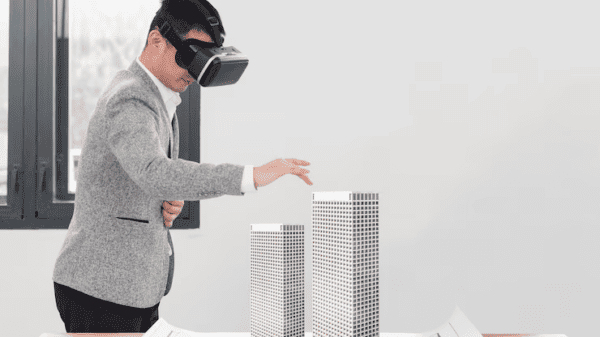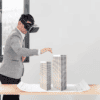After years of hype and anticipation, it seems the age of VR is finally upon us. The technology was originally developed to be used in video gaming, but as Mark Zuckerberg’s $2 billion acquisition of industry-leading hardware firm Oculus shows us, there are many who see the potential of VR beyond this medium.
Alongside the virtual Facebook Zuckerberg no doubt has up his sleeve, VR has started to rise to prominence in the field of retail. With online shopping increasingly outperforming its brick-and-mortar predecessors, is it only a matter of time before consumers make all their purchases from virtual worlds in strap-on headsets?
VR shopping from home
The most straightforward way VR is transforming shopping as we know it is through its use in e-commerce. Several companies are now pioneering VR apps that allow shoppers to enter a VR environment and browse and pick out items exactly as they would in the ‘real world’.
One such company to try this is online shopping giant eBay. The retailer is so confident about the success of VR shopping that its VR project does not even have a flashy name: it is called simply the “eBay Virtual Reality Shopping Mall”. This simple branding implies visiting this virtual mall is just another way to access eBay’s services, like using a web browser or mobile app. This attitude implies a confidence that, in due time, shoppers will switch between computers, phones and VR with ease.
The VR store itself is a co-production with Australian shopping mall giant Myer, whose products can be bought via the service.
eBay are not the only ones banking on the world of VR shopping malls. A small team of developers recently launched Retale, a VR e-commerce app that just might offer more choice than eBay’s. While eBay has Australian retailers Myer onside, Retale has garnered the support of US shopping giants Target, JCPenney and Macy’s.
Will home VR shopping ever catch on?
Despite the enthusiasm for VR shopping from the retailers’ side, it is unclear whether VR malls will ever be as popular with customers. Ariel Bogle of Mashable, who attended the launch event for eBay’s VR project, concluded: “For the moment, it’s unclear whether customers want to shop in virtual reality and whether they’ll treat this as more than just a gimmick.”
Similarly, a reporter from Vice News found one Chinese VR shopping mall “strange” and “lonely”. Not two adjectives retailers want to be associated with their shopping experiences.
On top of this, it seems VR shopping malls are a lot less exciting in reality than they sound in practice. Rather than drop users into a 3D rendered shopping mall—the kind of which you would find in video games—most of these applications use VR to present e-commerce items in a slightly more interesting way than they are shown on a computer screen.
As this video shows, eBay’s VR store bares little resemblance to a physical brick-and-mortar mall. Instead, it displays spider diagrams of products which users may want to buy and allows people to “move” towards clusters of objects from different departments. In the same vein, Retale’s store is more like a revolving display of three-dimensional promotional emails than a Matrix-for-shopaholics experience.
But despite this, VR could still be revolutionising retail, albeit in a very different way.
VR and the “shopping experience”
Though VR and e-commerce may seem like a natural partnership, the new technology may be more instrumental in a resurgence of high street success.
As the experts at OCS Retail Support have noted, virtual reality is transforming brick-and-mortar retail completely, with many big high street players investing heavily in VR and seeing great results. John Lewis, for example, has launched a VR trampoline experience in their flagship store to tie in with their recent #BustertheBoxer ads.
Rewind, a virtual reality production company that has collaborated on many VR experiences for products, says it is VR’s ability to help brands “build profound connections with their audiences through unique experiences” that makes it so popular. The emphasis here is on the experiences. Because while e-commerce’s VR shopping malls may be impressive, they certainly don’t measure up to the experience of bouncing on a trampoline with the cuddly cast of your favourite Christmas advert.
Rather than focusing on e-commerce implementations of VR, high street retailers are finding success in using this new technology as a part of what store designers Prop Studios calls “creative social experiences in-store”.
And while there is plenty of time for developers to make VR malls more enjoyable, we are much more likely to see virtual reality taking off as an in-store entertainment phenomenon beforehand.
Simon Davies is a London based freelance writer with an interest in startup culture, issues and solutions.
























































































































































































